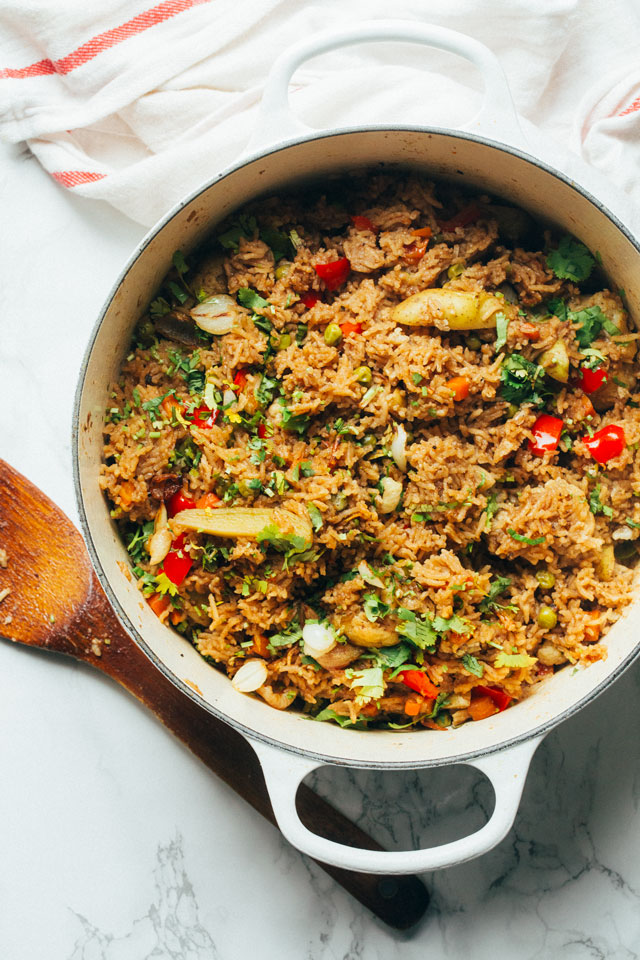 For many of us living so far away from our homeland, festivals do not feel like festivals, specially on a weekday. The morning starts the same way as any other morning, lazy to rush and then madness in a matter of seconds. Brush, shower, milk, breakfast, lunchbox…. oh lunchbox and what about the water bottle? Jacket! Grab… grab it fast. Run… run to the car and do not forget the seat belt. But wait, those shoes don’t work for the days of P.E class. Argh, never mind. Run… run to the car and do not forget the seat belt!
For many of us living so far away from our homeland, festivals do not feel like festivals, specially on a weekday. The morning starts the same way as any other morning, lazy to rush and then madness in a matter of seconds. Brush, shower, milk, breakfast, lunchbox…. oh lunchbox and what about the water bottle? Jacket! Grab… grab it fast. Run… run to the car and do not forget the seat belt. But wait, those shoes don’t work for the days of P.E class. Argh, never mind. Run… run to the car and do not forget the seat belt!
After barely making it in on time and the same stern look from the class teacher waiting with the door open for her last student who sprints through the school yard pulling up the strap of her school bag that keeps slipping off her shoulder, I make it back home. The home that looks as if a storm just passed it seconds ago. The baby comes running through the dinning room and honey nut cheerios kissing the floor make a crunching sound. A drool laden kiss from the baby and for some reason it reminds me today is Makar Sankranti. Super stange, but anyway! A quick phone call to mummy who doesn’t pick up probably because she had better things to do (you reading this maa?!) and I am clueless! So is it when you make kadhi or is it when you wear yellow and eat gur (jaggery) or something. Do pooja or go to the temple? Clueless! One thing I did remember that you make khichdi or some sort of rice dish on this day. Do not ask me why. My mum isn’t picking up her phone so go easy on the tough questions, alright. Festival doesn’t feel like festival, well atleast until the husband is back from work, butterfly back from school and we are all around the dinner table creating another madness. Until then I’ll get the Tahiri going.
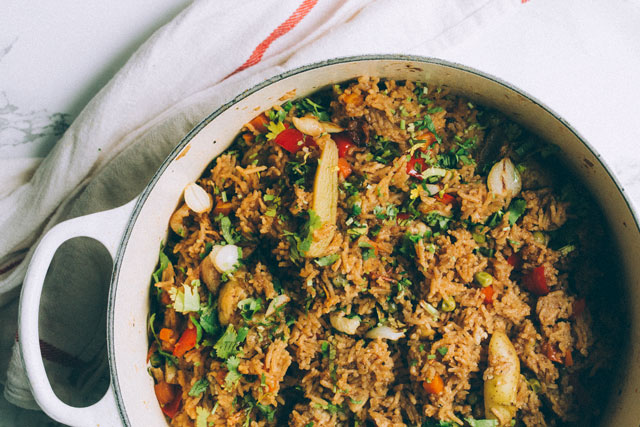 Tahiri, a close cousin of biryani and pulao. All of them made with more or less the same set of ingredients but still so different from each other. Biryani which was brought to India by the Persians is mostly made with some kind of meat. The meat is partially cooked separately, so is the rice and then both of them are layered with some more spices, sometimes yogurt and fried onions. Then sealed and slow cooked together, blending flavors of the meat, rice and spices together. Pulao is slightly low maintenance than biryani though for it just asks the ingredients to be cooked together instead of layering them. You can make. Biryani you usually make with some kind of meat although vegetarians have their own versions. Pulao being the low maintenance that it is isn’t partial to any and goes along well with both meat and vegetables.
Tahiri, a close cousin of biryani and pulao. All of them made with more or less the same set of ingredients but still so different from each other. Biryani which was brought to India by the Persians is mostly made with some kind of meat. The meat is partially cooked separately, so is the rice and then both of them are layered with some more spices, sometimes yogurt and fried onions. Then sealed and slow cooked together, blending flavors of the meat, rice and spices together. Pulao is slightly low maintenance than biryani though for it just asks the ingredients to be cooked together instead of layering them. You can make. Biryani you usually make with some kind of meat although vegetarians have their own versions. Pulao being the low maintenance that it is isn’t partial to any and goes along well with both meat and vegetables.
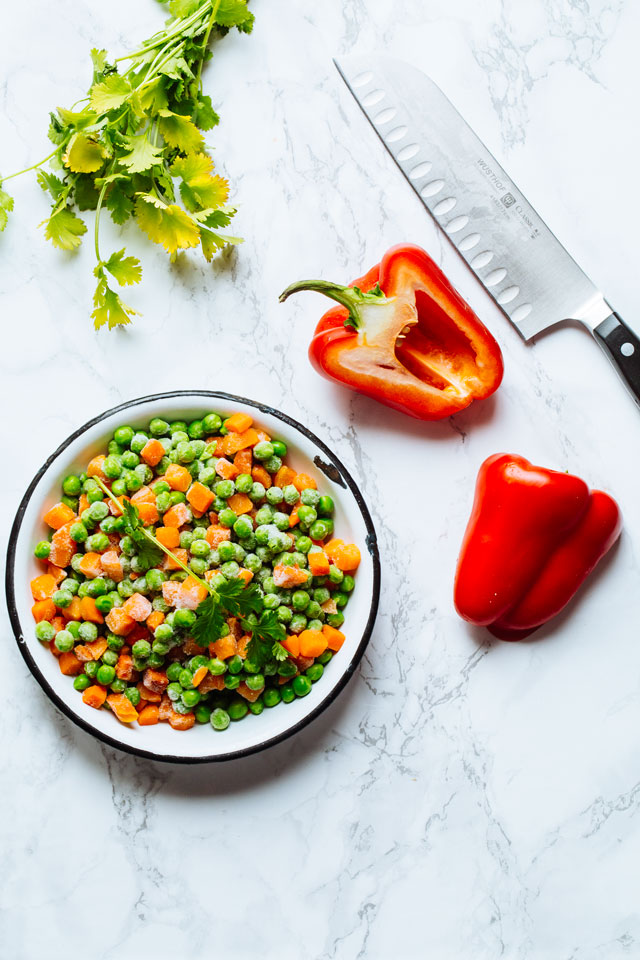
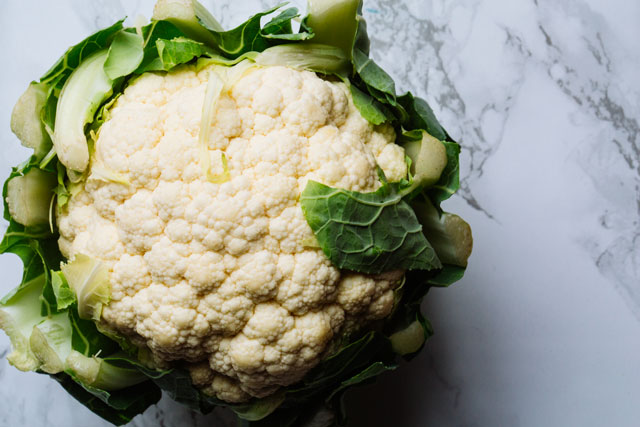 Tahiri is just one such easy going and stupendously comforting version of pulao which I believe originated in one of the homes of northern or central India. In Indian cuisine you will see the same dish prepared in several ways based on the region it comes from. My grandma used to say that back when the world not as small as it is now, it was very difficult for the ingredients to travel so people developed their own version of recipes based on what they had in hand. Tahiri is one such popular version of pulao prepared mostly in the states of U.P (Uttar Pradesh) and M.P (Madhya Pradesh). It mainly asks for vegetables, some whole or coarsely crushed and rice that is cooked with the spicy vegetables using the popular Indian cooking technique called Dumpukht. Now a lesson on Dumpukht will take another such post but in short its slow cooking where food cooks mainly in its own juices without adding to much water.
Tahiri is just one such easy going and stupendously comforting version of pulao which I believe originated in one of the homes of northern or central India. In Indian cuisine you will see the same dish prepared in several ways based on the region it comes from. My grandma used to say that back when the world not as small as it is now, it was very difficult for the ingredients to travel so people developed their own version of recipes based on what they had in hand. Tahiri is one such popular version of pulao prepared mostly in the states of U.P (Uttar Pradesh) and M.P (Madhya Pradesh). It mainly asks for vegetables, some whole or coarsely crushed and rice that is cooked with the spicy vegetables using the popular Indian cooking technique called Dumpukht. Now a lesson on Dumpukht will take another such post but in short its slow cooking where food cooks mainly in its own juices without adding to much water.
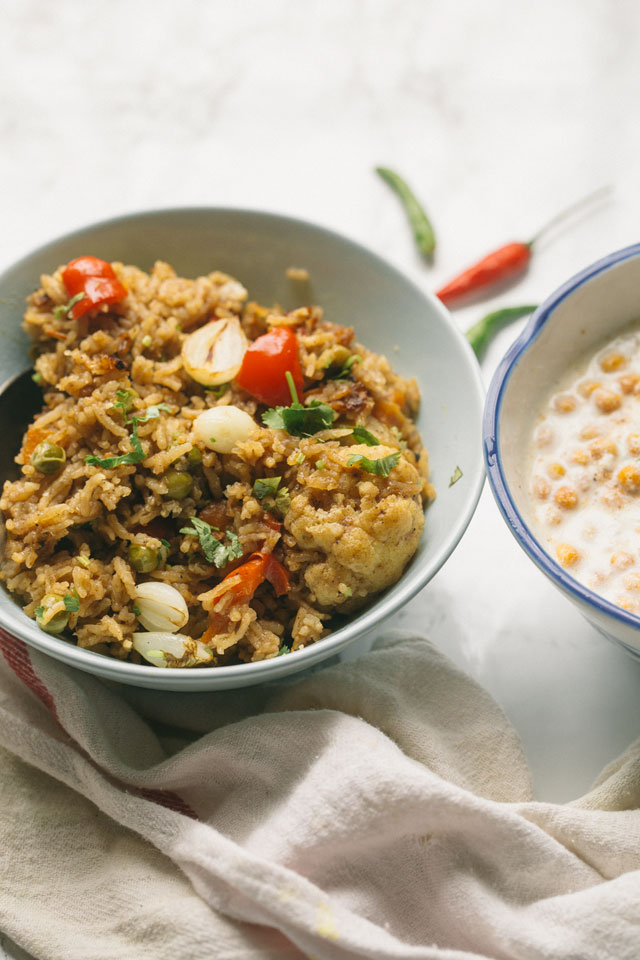 So lets cook Tahiri and celebrate Sankranti. Happy Sankranti everyone!
So lets cook Tahiri and celebrate Sankranti. Happy Sankranti everyone!
Ingredients:
2 cups long grain basmati rice
1/8 cup vegetable
1 tablespoon ghee
1 teaspoon black peppercorn
1 teaspoon cumin seeds
8-10 cloves
4-5 green cardamom
1/2 cinnamon
1 bay leaf
1 1/2 cups onion
4-5 garlic pods
1 1/2 inch ginger root
2-3 thai green chili (adjust per taste)
1 cup diced tomato
1 tablespoon coriander powder
1 teaspoon garam masala
6-8 cauliflower florets (cut into bite size chunks)
1 bell pepper (chopped)
1 1/2 cups frozen carrots and peas medley (thawed)
5-6 fingerling potatos (cut into halves lengthwise) Feel free to use any potato. Cut into bite size chunks.
Salt (per taste)
3 cups water
1/4 cup cilantro (chopped)
Method:
Wash rice in water once. Soak in fresh water for 10 minutes. Drain water. Set rice aside.
In a blender or food processor grind onion, ginger, garlic and thai chili into a smooth paste. Set aside.
Coarsely crush peppercorn, cumin, cardamom and cloves.
Heat oil and ghee together in a thick bottom pot. Add bay leaf, cinnamon and crushed spices. As they sputter turn the heat to medium high and add the prepared onion paste. Cook for 10 minutes until the paste thickens and turns golden brown, stirring occasionally and scraping the bottom.
Add salt. Mix well add tomato, coriander powder and garam masala. Mix well. Turn the heat to medium low. Cover with a head lid and cook for 5 minutes until the tomatoes begin to melt.
Add cauliflower florets and potatoes. If using raw peas and carrots instead of frozen, add now. Stir and cook on medium for 5 minutes. Followed by peas, carrots and bell pepper. Mix everything well together. Cook for another 2-3 minutes.
Add washed rice. Now is the time to use your ears more than your hands. Pay attention the sound or rather the music all the ingredients are making! Very gently turn the rice every 30 seconds and wait for the sputtering sound it makes. This is when excess soaking water in the rice has evaporated and its getting roasted and polished in the greasy hot pan. This process prevents the rice from sticking when cooked in water.
Once the sputtering sounds gets intense, add water. Bring it to a rolling boil on high heat. Then turn the heat to low, cover with a heavy lid or place a heavy weight on top if the lid is light and let the Tahiri slow cook for 10 minutes or until the rice is al dante. Turn the heat off. Leave the lid in place for another 15-20 minutes to let the steam trapped inside, do its magic.
Serve hot with Raita.
Happy Sankranti everyone!

Hi Prerna,
Living abroad spins a whole new dimension to the word festival. Its hybridised and sometimes solemnised due to the new countries boundaries. The bigger festivals do get the winning medallion but the smaller ones are the ones which bear the brunt. Nevertheless if you are a mother of two brimming toddlers then the version is diluted to silent prayers in our mind. A compromised sweet meat or a minute savoury glamour the day. I had idli sambar today while back home there are tons of Pitha. Alas, Non resident Indians.
Happy Makarsankranti!!
Best Regards,
Roy
Gosh, tell me about it @justroy! I’d kill for a bite of Pitha right now. My mum keeps consoling me that it sbecause my hands are full with the kiddos and even she has no memories of celebrating these festivals when we were little for she had no time either and hence cut corners. Although I know its just the mum in her talking and its not exactly true 🙂